1. Componenti del kit di reagenti
| Specifiche | 50T | 100T |
| Gatto. NO. | SN0221 | SN0222 |
| Colonne di estrazione del DNA (impostato) | 50 (impostato) | 100 (impostato) |
| Reagent Buffer IV | 20 ml | 2×20 ml |
| Reagent Buffer Cplus | 30 ml | 30 ml |
| Tampone di lavaggio 1 | 15 ml | 2 × 15 ml |
| Tampone di eluizione | 20 ml | 20 ml |
| Proteinasi K | 1ml | 2x1 ml |
| RNasiA | 1ml | 1ml |
| Manuale di istruzioni | 1 | 1 |
2. Magazzinaggio
Questo kit di reagenti deve essere conservato a temperatura ambiente (15-25℃) e in condizioni asciutte, con una durata di conservazione di 12 mesi. Le colonne di purificazione per l'estrazione del DNA possono essere conservate per 1 anno in un ambiente fresco e asciutto. Proteinasi K e RNasi A contengono conservanti, consentendo il trasporto a temperatura ambiente, ma per la conservazione a lungo termine, dovrebbero essere mantenuti a -20 ℃.
3. Istruzioni per l'uso del kit di reagenti
3.1 Questo kit di reagenti è destinato alla ricerca di biologia molecolare e non deve essere utilizzato per la diagnosi o il trattamento di malattie.
3.2 Alcuni componenti del kit di reagenti contengono sostanze irritanti. Si raccomandano misure protettive come indossare indumenti protettivi e occhiali protettivi.
3.3 Durante l'utilizzo di questo kit di reagenti, una centrifuga ad alta velocità, bagnomaria (bagno di metallo), miscelatore a vortice, etanolo anidro, acqua deionizzata sterile, e le provette EP devono essere preparate dall'utente.
4. Introduzione al kit di reagenti
The Animal/Tissue Purificazione del DNA Kit offers a rapid and effective solution for animal tissue and cell culture DNA purification, widely applicable across animal tissues and cell cultures.
This DNA rapid purification kit swiftly extracts total DNA from animals and cells, yielding DNA directly usable for PCR, Southernblotting, and similar applications. The purification process does not require toxic agents like phenol-chloroform, making this DNA purification kit highly suitable for various other samples.
5. Principi e procedure sperimentali
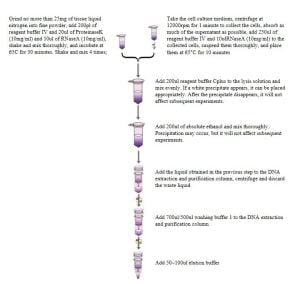
6. Processo di estrazione
Prima di iniziare l'esperimento:
UN. Reagent Buffer IV tends to precipitate under low-temperature conditions. Si consiglia di riscaldare a 65 ℃ per 5 minuti. After the precipitation dissolves, può essere utilizzato normalmente.
B. Prior to use, add the specified amount of anhydrous ethanol to WashRespingente 1 as indicated on the reagent bottle label, and mark a check on the label to indicate the addition of anhydrous ethanol.
C. Il tampone di eluizione è un 0.1x soluzione TE with minimal EDTA content. Se l'EDTA potrebbe influenzare gli esperimenti successivi, it is recommended to replace the Elution Buffer with sterile deionized water.
- Gestione dei campioni:
UN. Take cell culture, centrifugare a 12,000 giri al minuto per 1 minute to collect cells, and aspirate the supernatant as much as possible. Add 250μl of Reagent Buffer IV and 10μl of RNaseA (10 mg/ml) to the collected cells, thoroughly suspend, and incubate at 65°C for 10 minuti.
B. Grind tissue not exceeding 25 mg into a fine powder using liquid nitrogen. Add 200μl of Reagent Buffer IV, 20μl of Proteinase K (10 mg/ml), and 10μl of RNaseA (10 mg/ml) to the powder, shake well, and incubate at 65°C for 30 minuti, shaking the mixture four times during this period.
2. Aggiungere 200μl of Reagent Buffer Cplus to the lysate and mix well. If a white precipitate appears, it can be left undisturbed; it won’t affect subsequent experiments once the precipitate disappears.
3. Aggiungere 200μl of anhydrous ethanol and mix thoroughly. Some precipitation might occur, but it won’t affect subsequent experiments.
4. Applicare il liquido ottenuto alla colonna di purificazione dell'estrazione del DNA (sleeve) (circa 650~700μl ogni volta), let it sit at room temperature for 2 minuti, centrifugare a 12,000 giri al minuto per 30 secondi, scartare i rifiuti raccolti, e reinserire il tubo di raccolta nella colonna di purificazione per il passaggio successivo.
5. Posizionare la colonna di purificazione per l'estrazione del DNA (sleeve) into a new collection sleeve, aggiungere 700μl of WashRespingente 1, centrifugare a 12,000 giri al minuto per 30 secondi, scartare i rifiuti, e posizionare la colonna di purificazione per l'estrazione del DNA (sleeve) back into the sleeve for the next step.
(Nota: Confirm the addition of anhydrous ethanol to Rinse Buffer 1.)
6. Aggiungere 500μl of WashRespingente 1 alla colonna di purificazione per l'estrazione del DNA (sleeve), centrifugare a 12,000 giri al minuto per 30 secondi, extend centrifugation time appropriately to ensure the membrane is drier.
(Nota: Ethanol has a significant impact on subsequent experiments; therefore, membrane dryness is crucial. Dopo la centrifugazione, ensure no ethanol remains before elution. Discard the waste and collection tubes afterward. After rinsing with Wash Buffer 1, the membrane on the DNA purification column should have a faint color. Carefully remove the DNA purification column after centrifugation, ensuring it doesn’t touch the collection tube to prevent ethanol contamination.)
7. Place the DNA purification column in a new centrifuge tube, add 100μl of Elution Buffer directly onto the membrane, centrifugare a 12,000 giri al minuto per 1 minuto, e raccogliere il DNA.
(Nota: Eluting DNA with 50μl of Elution Buffer can increase DNA concentration but decreases total DNA yield.)

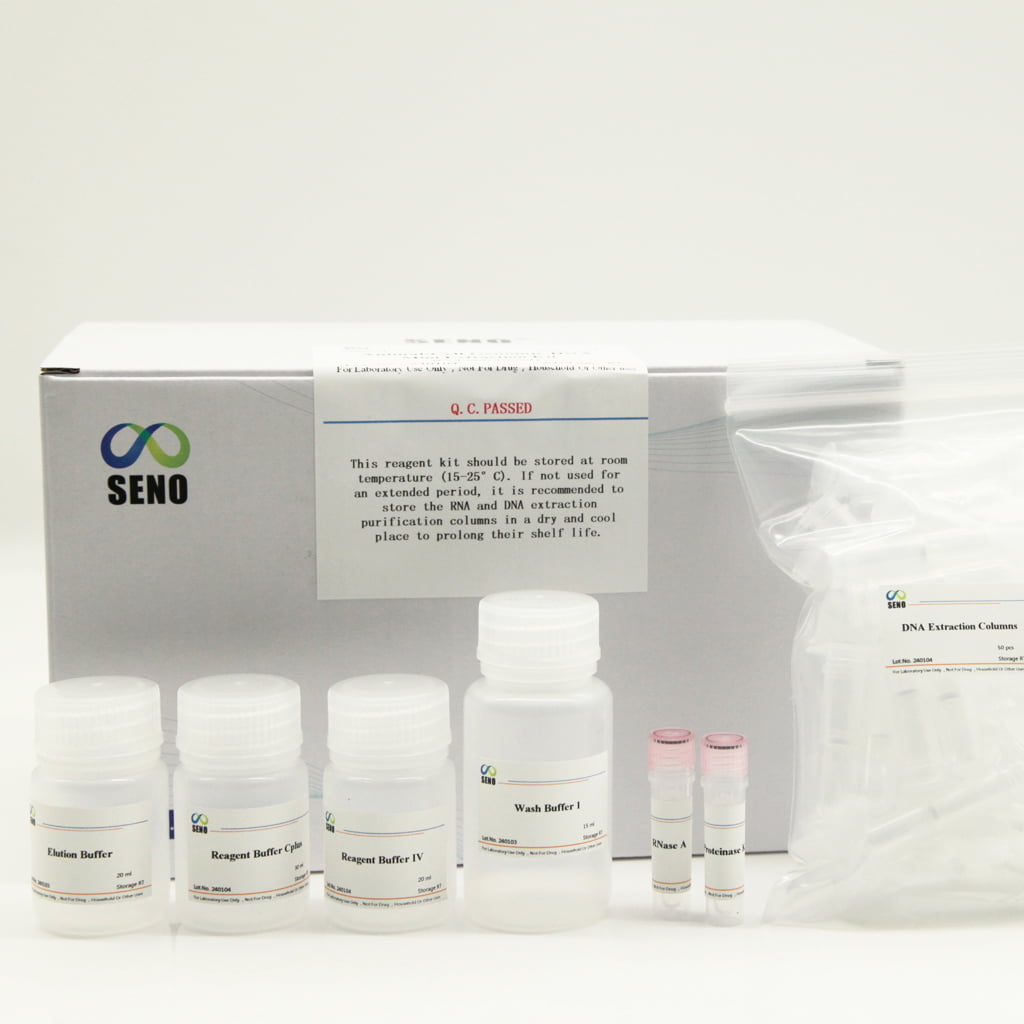
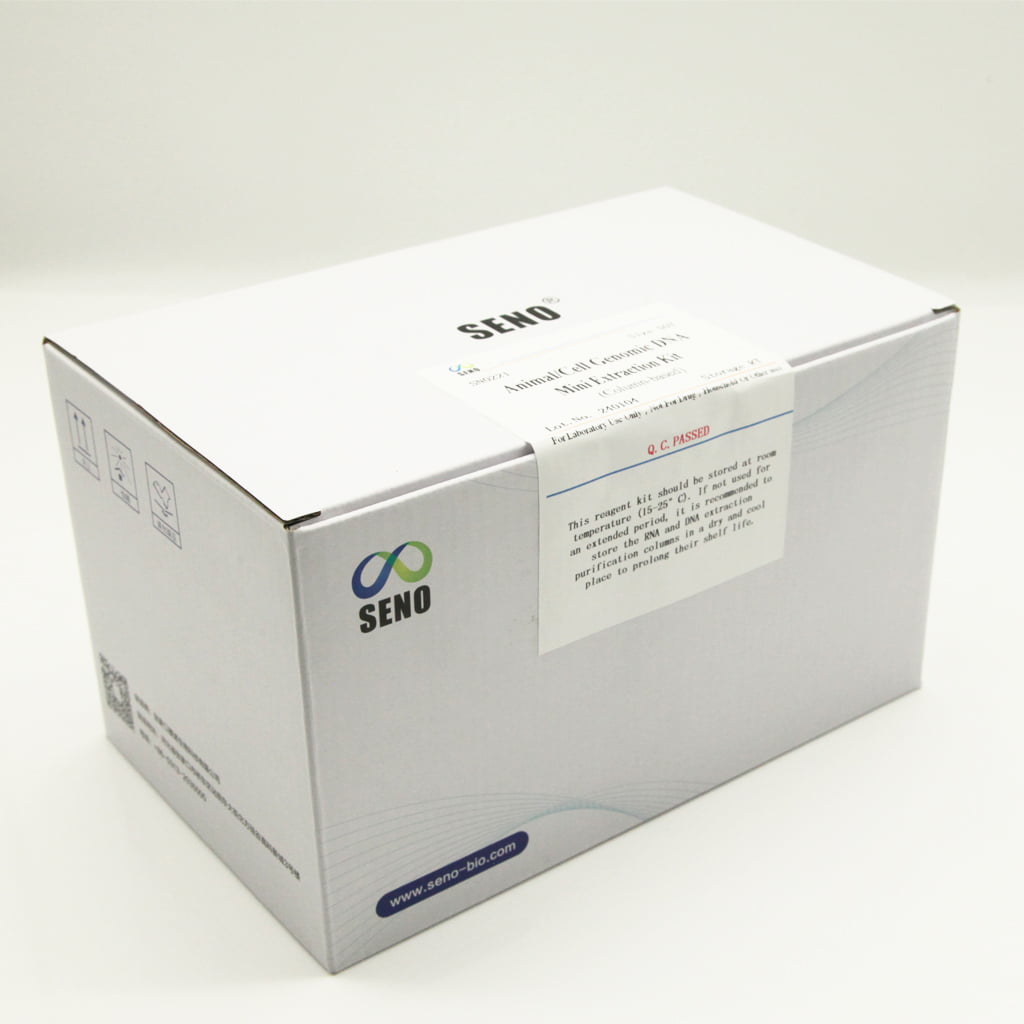
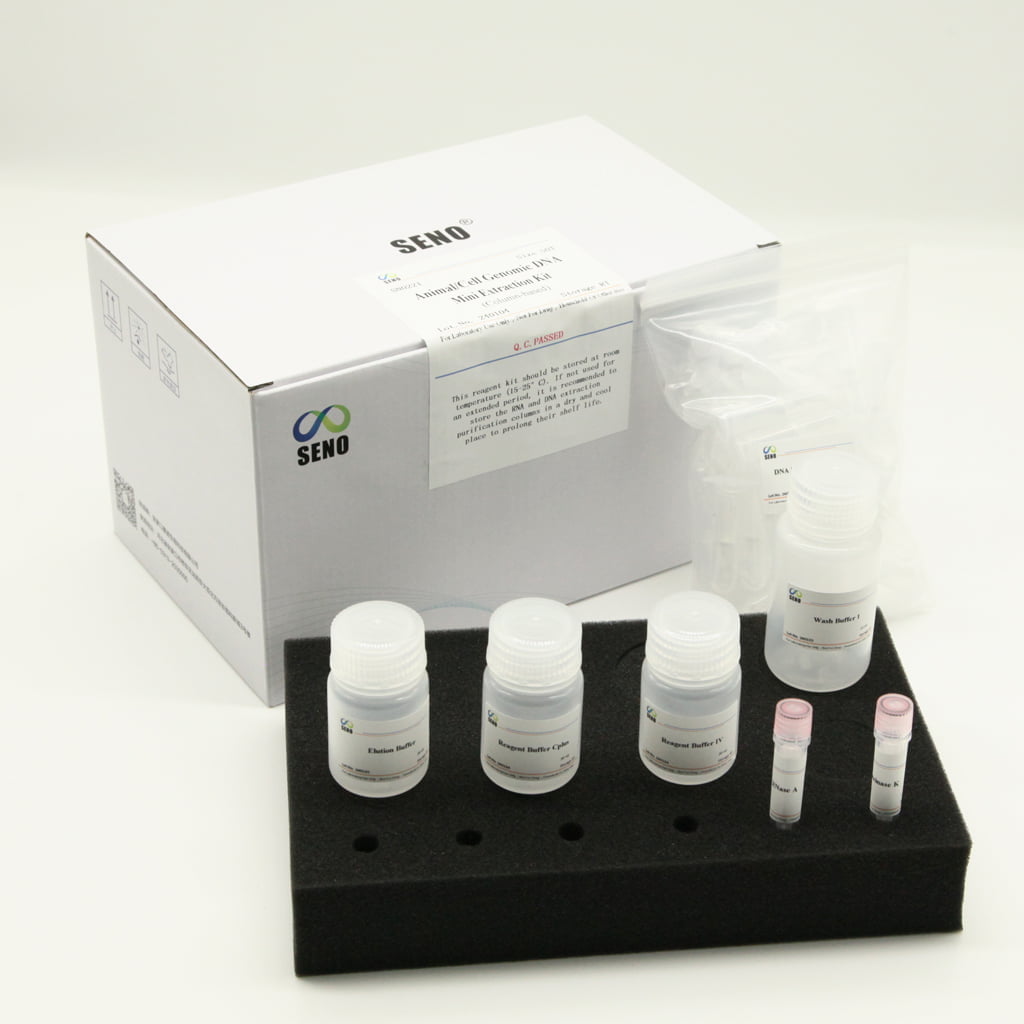
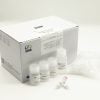
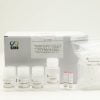
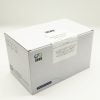
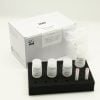
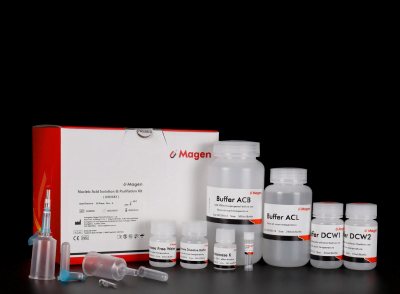
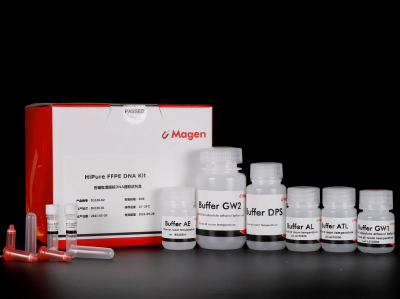
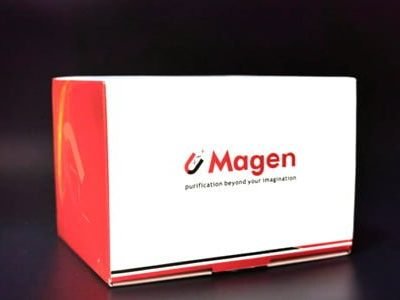
Recensioni
Non ci sono ancora recensioni.